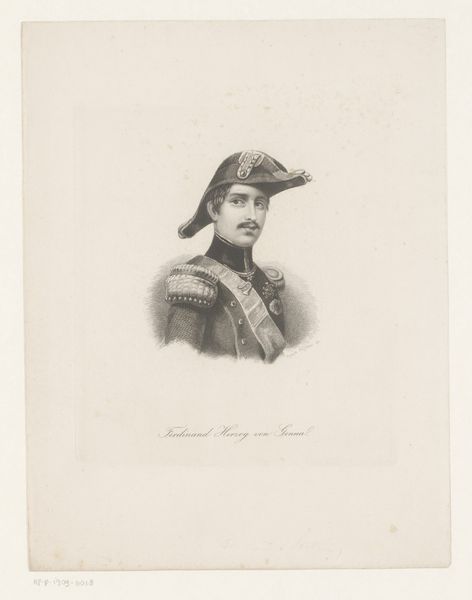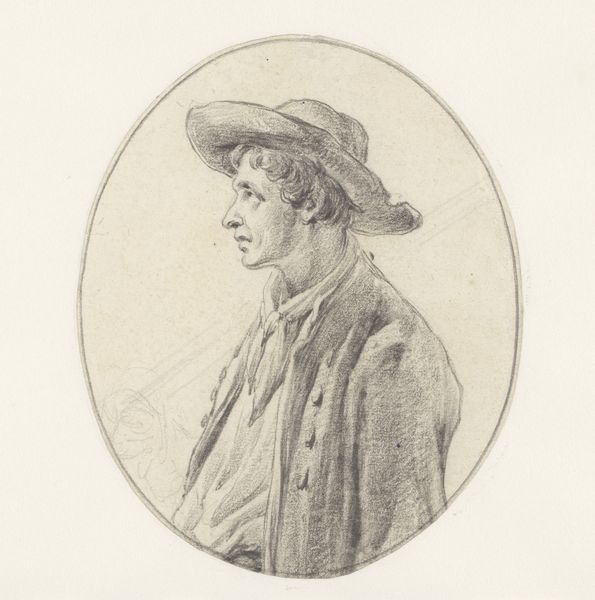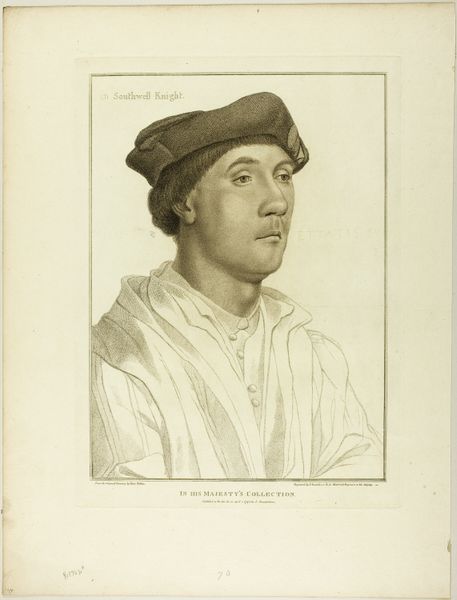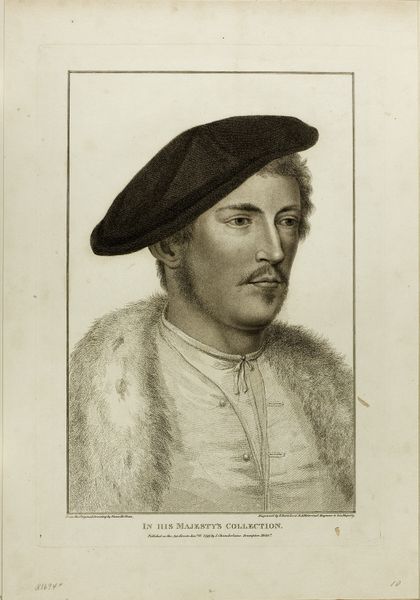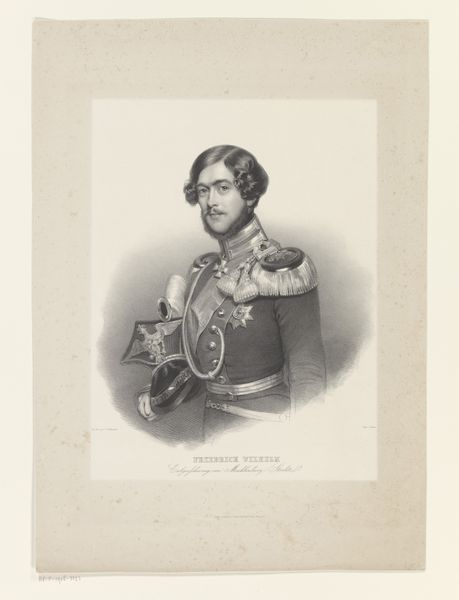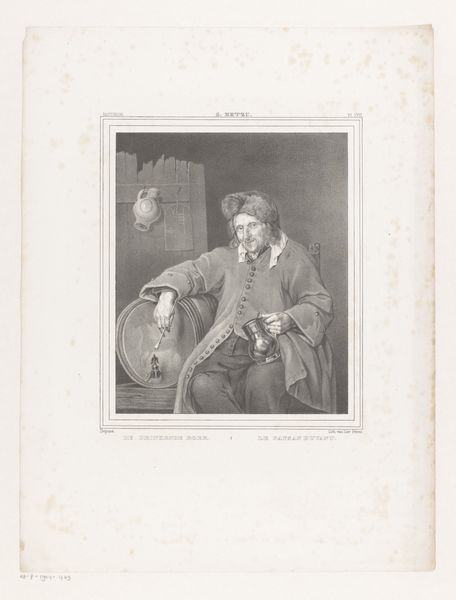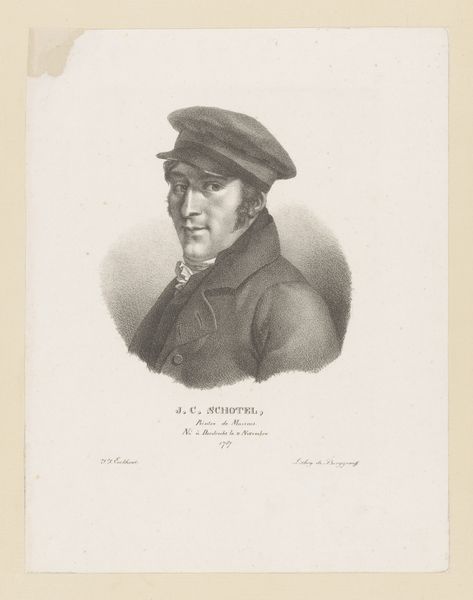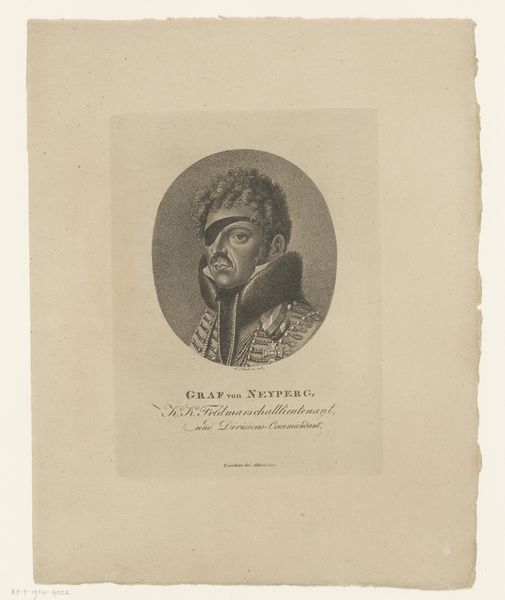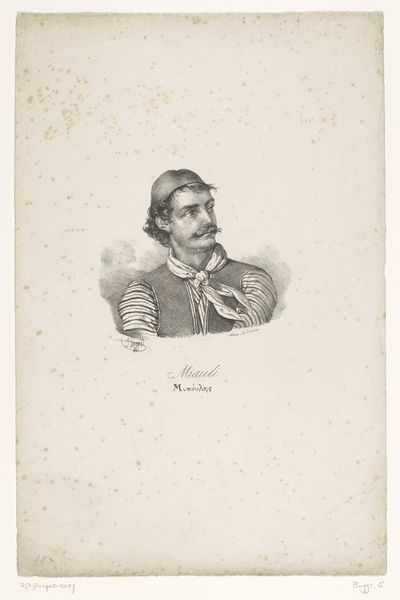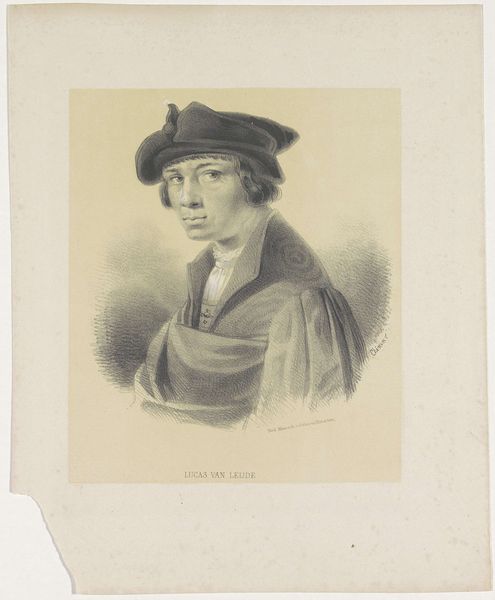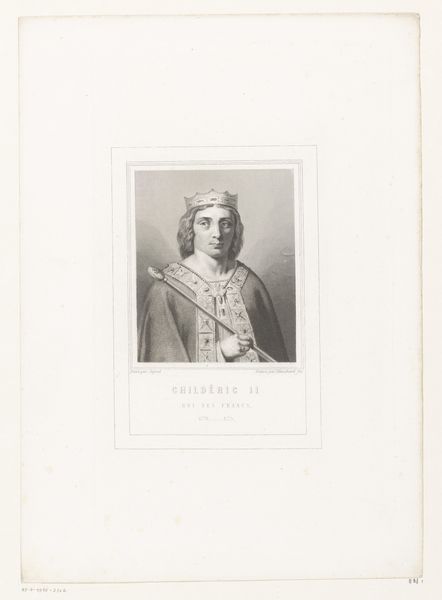
drawing, print, paper, engraving
#
portrait
#
drawing
#
aged paper
#
toned paper
#
light pencil work
# print
#
old engraving style
#
paper
#
personal sketchbook
#
history-painting
#
italy
#
engraving
Dimensions: 216 × 146 mm (image); 305 × 228 mm (plate); 470 × 344 mm (sheet)
Copyright: Public Domain
Editor: Here we have Francesco Bartolozzi’s “Lord Clinton,” an engraving from 1793. It's fascinating how this print, likely made for wider distribution, immortalizes a nobleman through delicate lines on paper. What do you see in this piece, particularly concerning its materials and context? Curator: Considering its material reality, it’s more than just a portrait; it’s a commodity born of labor. Bartolozzi, as a printmaker, occupies a unique position in the art world. Engravings like this were essentially reproducible images for a consuming public. This piece also highlights the labor involved – the artist's skill, the paper production, the printing process – all circulating within a specific economic and social framework. What kind of social function did prints serve at that time? Editor: I imagine they made art more accessible to people beyond the elite, kind of like mass media today. So, instead of focusing on the artistic genius, you're pointing out how this engraving participates in a larger system of production and consumption. Curator: Precisely! Think about the "old engraving style" mentioned in the metadata. It speaks volumes about the established methods, workshops, and the distribution networks operating at the time. We are seeing more than the final product. Can you elaborate how an aesthetic preference – the “old engraving style” – connects to concrete realities of the labor market for engravers? Editor: Perhaps the continued demand for that specific style helped sustain the livelihood of many engravers trained in traditional techniques, even as newer methods might have been emerging. I've never considered engravings quite this way. Curator: Hopefully, it's given you insight into considering the material conditions that shape art production and the economic factors that influence both artist and audience. It allows a far broader reading of the art object.
Comments
No comments
Be the first to comment and join the conversation on the ultimate creative platform.


